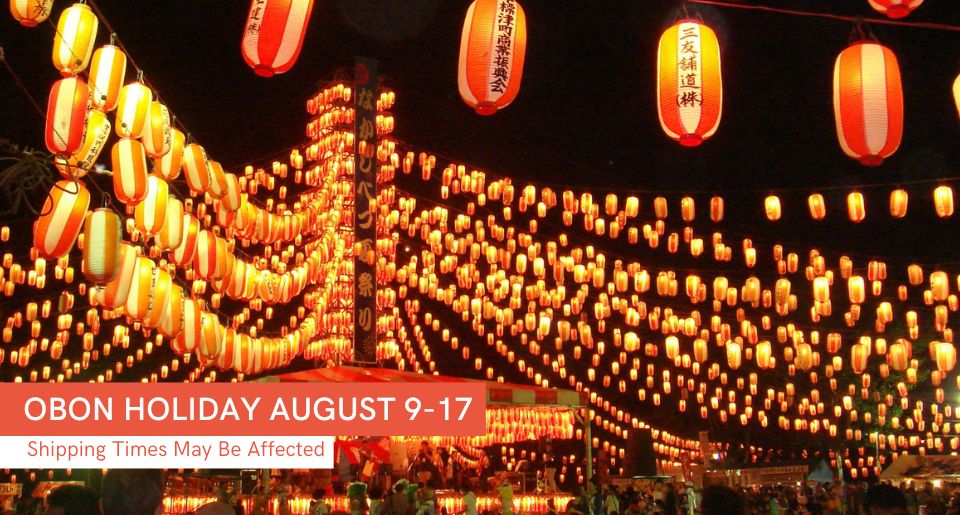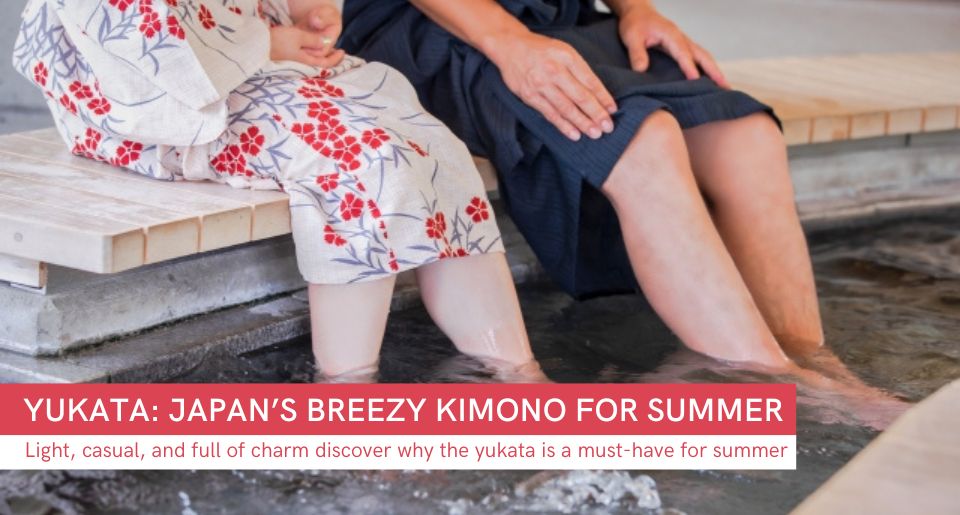Contents
- Introduction
- Protecting Nobility's Valuables Since the 8th Century
- What Are Furoshiki Cloths Made Of
- Furoshiki for Everyone: Endless Designs to Choose From
- 8 Creative Uses for Furoshiki—the Ultimate Versatile Cloth!
- Wrap Like a Pro: 12 Common Furoshiki Folding Patterns
- How Furoshiki Supports Eco-Friendly Lifestyles
- How to Maintain Furoshiki: Best Practices for Fabric Care
- Where to Find Authentic Japanese Furoshiki
Introduction
A symbol of noble tradition and timeless elegance, the Japanese furoshiki (風呂敷) cloth is the ultimate eco-friendly, versatile fabric you’ll ever own!
If you're new to the aesthetics of the furoshiki culture, this guide is the perfect place to start, where you’ll learn everything from the noble origins of this wrapping technique to the variety of materials and designs used, through different folding patterns, all the way to where you can find authentic Japanese furoshiki.
So, let’s ‘unwrap’ the secrets of this timeless Japanese art and bring less waste, more beauty into your life!
Protecting Nobility's Valuables Since the 8th Century
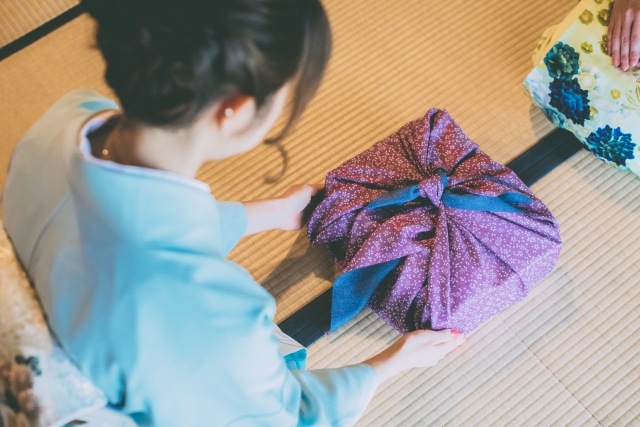
Long before it appeared in modern eco-friendly gift-wrapping tutorials, furoshiki was a staple of Japanese nobility, dating back to the Nara Period around 710-794 AD.
Initially known as tsutsumi (literally meaning 'wrapping'), these elegant fabric squares were first designed to protect the valuable items stored in Japanese temples.
As public baths became popular social hubs, the elite would cleverly use these cloths, distinctively marked with their family crests, to wrap and safeguard their attire, ensuring their robes remained separate from everyone else's.
The arrival of the first sewing machine in Japan marks a transformative chapter in the history of furoshiki. Legend has it that sewing machines were first brought to Japan by a young man for his mother in 1859.
With the ability to mass-produce these wraps, furoshiki transcended its aristocratic origins, finding a new audience among the general public. Its versatility shone brightly as it adapted to various needs—it cradled merchandise in markets, bundled tools for artisans, beautifully wrapped gifts, and even cleverly transformed into a travel bag.
What Are Furoshiki Cloths Made Of
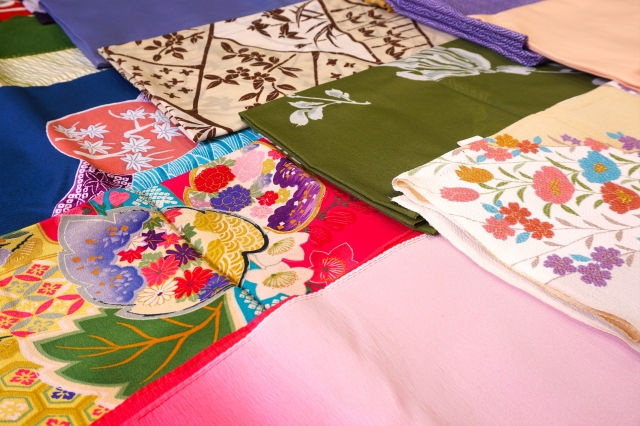
Furoshiki wraps—traditionally made of only silk or cotton—now include trendy materials like nylon and polyester, appealing to today’s varied needs and tastes.
Silk furoshiki are the epitome of luxury, their smooth textures and vibrant prints offer an exceptional choice for those special gifts. With its glossy surface catching the light, silk adds an elegant touch to your gesture that simply can’t be matched—perfect for those moments that demand nothing but the best.
On the other hand, cotton furoshiki wraps offer a practical charm. Their affordability and durability allow them to easily fit a wide range of purposes—from carrying everyday groceries to bundling up a spontaneous picnic—making them a top pick for those who appreciate versatility alongside style.
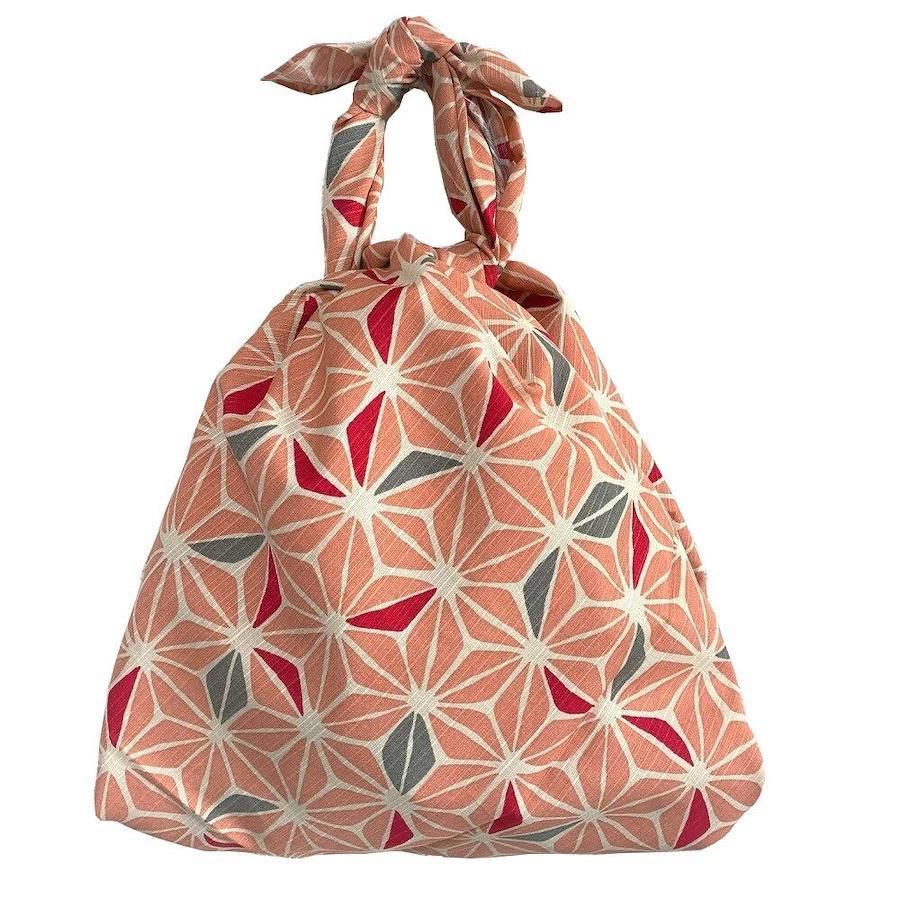
Pink cotton furoshiki featured on ZenPlus
Nylon furoshiki wraps are another great choice, offering a balance of affordability, durability, and versatility. Known for being lightweight and heat resistant, nylon makes it easy to carry and protect items in a range of conditions without fading or wearing out over time.
You can also explore the versatility of polyester furoshiki wraps—a superb choice for both daily activities and special gatherings. Known for their durability and lightweight feel, these wraps hold their shape and vibrant colors even with frequent use.
Their wrinkle resistance keeps them smooth, while quick-drying properties make them perfect for on-the-go situations. The vivid, long-lasting colors and easy maintenance are another major bonus to this cost-effective material.
Furoshiki for Everyone: Endless Designs to Choose From
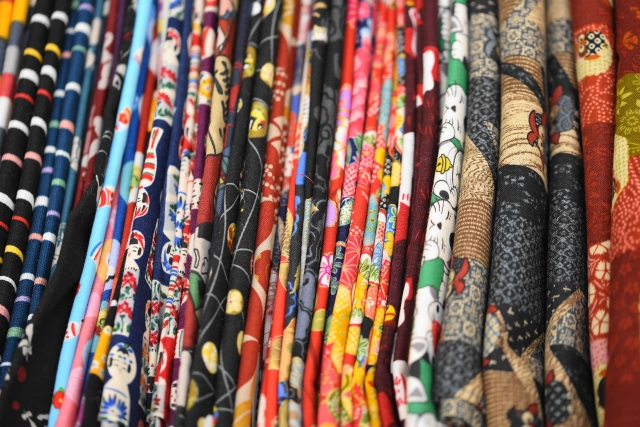
One fun aspect of furoshiki is its nearly limitless variety of designs and patterns, ensuring there's a perfect wrap for everyone. Take, for example, the traditional Saijiki furoshiki, which beautifully captures the essence of Japanese customs and aesthetics.
Or consider the season-themed designs that celebrate the natural beauty of sakura trees in spring, the rich hues of autumn, and the festive spirit of Christmas in winter. You can also have fun wrapping with the cute Maneki-neko, Japan's lucky cat, which brings a playful touch of whimsy to your wrapped item.
For art enthusiasts, the valuable Ukiyo-e style furoshiki showcases classic Japanese woodblock prints. Meanwhile, anime fans can choose from exciting anime-themed designs like the Kimetsu no Yaiba furoshiki (perfect for wrapping awesome Demon Slayer merch!).
These examples only scratch the surface of the vast and diverse selection of furoshiki in Japanese culture. You can explore these and many more on the online platform ZenPlus, where you can access the best of Japan right from your own home.
- Did you know? Historically, the materials and designs of furoshiki cloths were indicators of social status. Luxurious silk furoshiki with elaborate designs were reserved for the upper classes, while simpler materials like indigo-dyed cotton or hemp were common among lower social ranks. Nowadays, everyone can (thankfully) enjoy a variety of materials and designs that suit their own style!
8 Creative Uses for Furoshiki—the Ultimate Versatile Cloth!
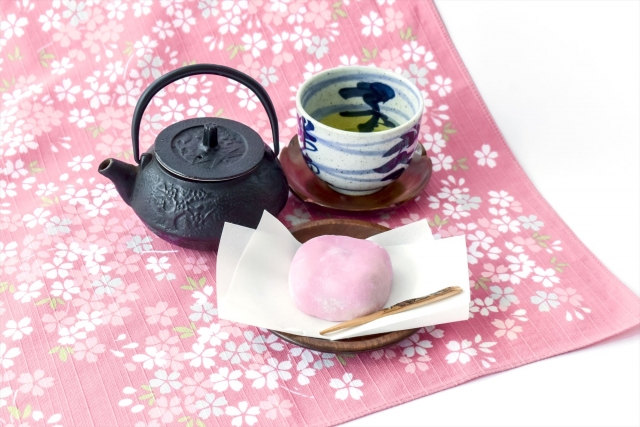
You'd be astonished at what you can do with just a square of beautiful, high-quality Japanese fabric. Below are just 8 examples to inspire you—let your imagination take it from here!
- Gift Wrapping: Furoshiki wraps transform simple gifts into striking works of art, thanks to their sophisticated folding techniques and vibrant patterns (sure to leave a lasting impression!)
- Fashion Accessory: With a twist or a knot, furoshiki can become a stylish bracelet, a chic neck scarf, or even a protective cover over leather bag handles to shield them from wear and staining.
- Wall Art: Furoshiki can transform into a stunning piece of artwork when displayed on a wall. Showcasing exquisite fabrics and detailed designs, they can add a vibrant touch of culture and color to any space.
- Eco-friendly Shopping Bag: Furoshiki provides a reusable and trendy option for those looking to reduce their plastic usage. Eco-savvy shoppers will love using these stylish Japanese wrapping cloths to carry groceries and other essentials (no need to sacrifice style for sustainability!)
- Lunch Box Carrier: Perfectly suited for wrapping and transporting bento boxes, furoshiki ensures that meals are kept secure and spill-free, maintaining both the safety and the chic presentation of your food.
- Protector for Fragile Items: Wrapping ceramics and fragile items in furoshiki offers a protective cushion that guards them during transit—a brilliant and stylish safeguarding solution.
- Protective Face Mask: In times of need, furoshiki can be fashioned into a stylish protective face mask—because why not?
- Tea Ceremony Carrier: Furoshiki can elegantly bundle your matcha and related tea ceremony utensils, making it easy to carry and set up a tea ceremony anywhere you wish!
Wrap Like a Pro: 12 Common Furoshiki Folding Patterns
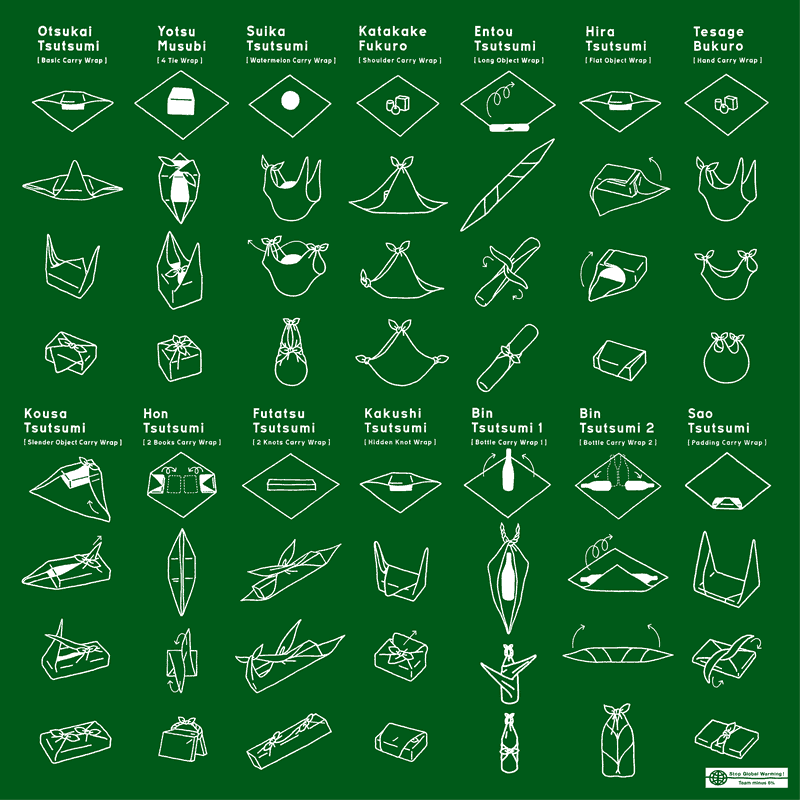
Image source: The Ministry of the Environment, Government of Japan
Beginners might feel a bit overwhelmed by the various folding patterns of furoshiki, but breaking them down into basic patterns can deepen your appreciation for this versatile, noble fabric even more.
Check out some common furoshiki folds below, as simplified by the Ministry of the Environment, Government of Japan:
- Otsukai Tsutsumi (Basic Carry Wrap) - A straightforward wrap used for general carrying purposes.
- Yotsu Musubi (4 Tie Wrap) - Designed for secure carrying, featuring four knots for added stability.
- Katakake Fukuro (Shoulder Carry Wrap) - This allows the fabric to be worn over the shoulder, making it ideal for transporting heavier loads.
- Entou Tsutsumi (Long Object Wrap) - Perfect for wrapping long items, ensuring they can be carried easily.
- Hira Tsutsumi (Flat Object Wrap) - Optimized for flat objects, providing a snug fit and protection.
- Tesage Bukuro (Hand Carry Wrap) - A simple hand carry bag, ideal for small to medium-sized items.
- Kousa Tsutsumi (Sided Object Carry Wrap) - Suitable for objects with an uneven shape, securing them on all sides.
- Hon Tsutsumi (2 Books Carry Wrap) - Specifically designed to carry two books securely.
- Futatsu Tsutsumi (2 Knots Carry Wrap) - Uses two knots to secure items within the wrap.
- Kakushi Tsutsumi (Hidden Knot Wrap) - Features a hidden knot for a sleek appearance and security.
- Bin Tsutsumi 1 & 2 (Bottle Carry Wrap) - Two variations for carrying bottles, providing padding and stability.
- Sao Tsutsumi (Padding Carry Wrap) - Offers extra padding for fragile items.
How Furoshiki Supports Eco-Friendly Lifestyles

Image source: Instagram
Furoshiki's appeal has soared as eco-friendly choices gain traction and more people commit to sustainable living. From May 17 to 19, MUSUBI Kyoto hosted the "Furoshiki SDGs LIFE 2024" exhibition, showcasing beautifully designed Japanese cloths that offer an alternative to plastic bags and reduce wrapping waste.
This annual event embraced the theme "Borderless" this year, emphasizing the universal usability of furoshiki by individuals of any age or nationality.
The exhibition provided insights into the various applications of furoshiki and the sustainable practices of MUSUBI’s products. Attendees discovered furoshiki crafted from eco-conscious materials such as organic cotton, recycled polyester, and rayon, which are used to create water-repellent textiles.
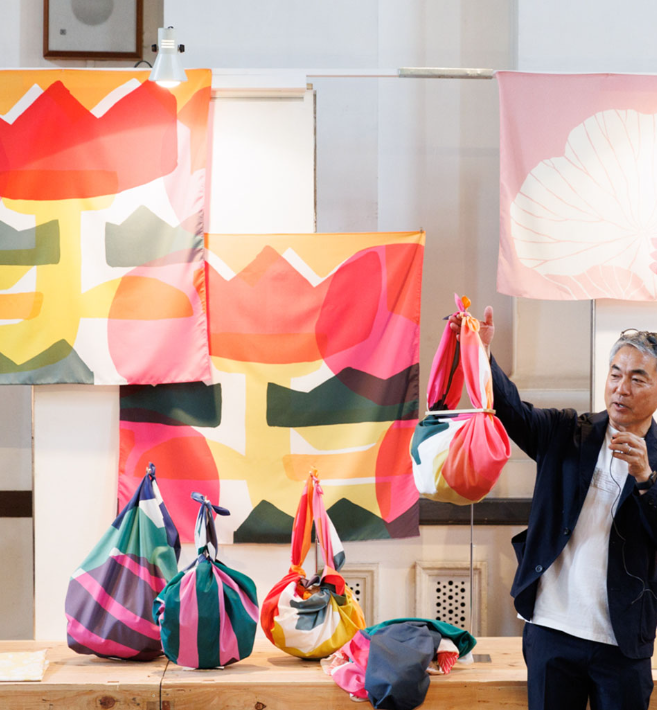
Image source: Instagram
Highlighting the water-repellent "aquadrop" furoshiki, these versatile cloths prove invaluable in diverse scenarios, from serving as picnic mats to being essential in emergency situations.
Furoshiki has made remarkable progress in raising awareness about sustainable practices since its inception. Historically, furoshiki was an integral part of daily life and was frequently used in various events.
However, by the 1960s, this cherished practice began to decline as society shifted towards mass production and consumption. This period marked the rise of a "single-use and dispose" culture that has dominated up to the present day.
The comeback of furoshiki shines a light on a positive return to thoughtful, sustainable habits, challenging the disposable habits shaped over decades.
How to Maintain Furoshiki: Best Practices for Fabric Care
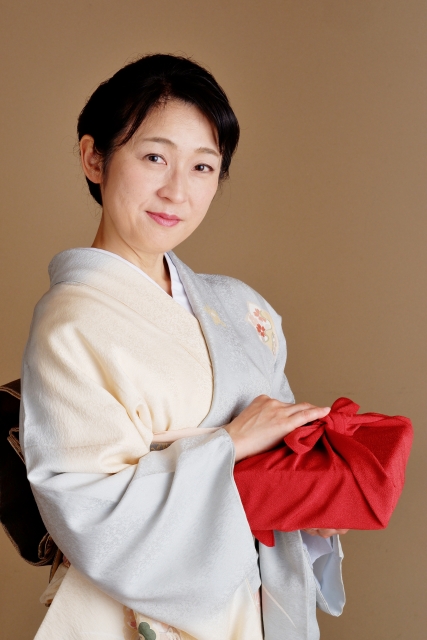
Furoshiki is so precious and requires gentle and specific care, but managing this becomes straightforward once you familiarize yourself with the needs of each material.
Silk, known for its delicacy, requires gentle handling. It's surprisingly easy to clean as it naturally releases dirt. Hand wash silk items in very cold water with a mild detergent.
After washing, rinse thoroughly in cold water with a few drops of citric acid added to maintain the fabric's softness. Avoid wringing out silk—instead, press out the water by rolling it in a towel. Allow silk furoshiki to air dry away from direct sunlight and iron sparingly with a cool iron and a protective press cloth.
Cotton is durable and soft but prone to shrinking. To care for cotton furoshiki, it's best to hand wash in cold water to minimize shrinkage. After washing, gently stretch the fabric while it's still damp to counteract any shrinkage.
Rather than using a dryer, line dry your cotton furoshiki to avoid the intense heat and tumbling action that can further shrink and wear out the fabric.
The key to furoshiki care is understanding the needs of the specific material you're dealing with. Each type of fabric demands a different approach to ensure its longevity and preserve its unique qualities.
Where to Find Authentic Japanese Furoshiki
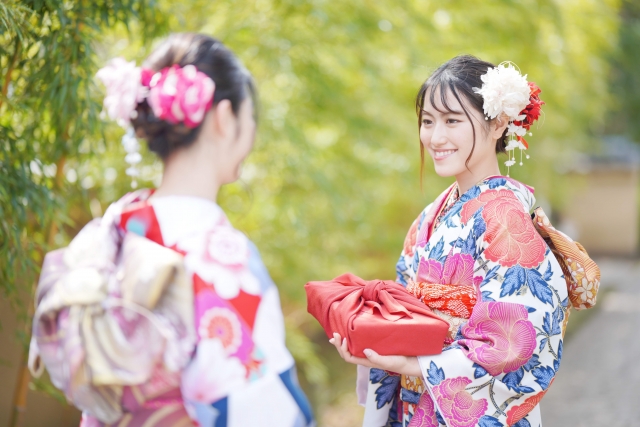
Furoshiki, a quintessentially Japanese product, is best sourced directly from Japan to ensure authenticity. Not planning a trip to Japan soon? You can still experience the joy of choosing from a vast array of Japan-made furoshiki through ZenPlus—an online platform offering 5+ million Japanese items from over 3,000 verified sellers.
Now, you can literally access Japan while relaxing on your couch!
Imagine getting your hands on all the products you've dreamed of from your favorite country, with everything delivered straight to your doorstep.
Whether you’re drawn to traditional furoshiki patterns that whisper tales of old Japan, fancy stunning contemporary designs, or crave other Japanese goods, ZenPlus is the best place to start.
Hunt down everything Japanese and shop like you're in Japan (minus the plane ticket!).


